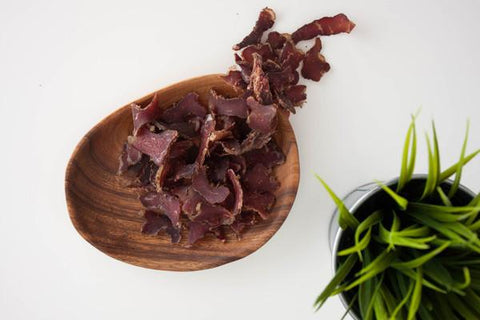For thousands of years countries all over the world have used different recipes and methods for preserving meat – a tradition that began out of the need for food to last travellers, hunters and explorers long trips without spoiling. Dried meat is a nutritious and lightweight food that works well for people who are constantly on the move. Dried meat – including biltong – has played a large role in the survival of humankind over many centuries.

History of dried meat in Europe
The popularity of dried meat began in Europe during Roman times. The Roman army was fed mainly on a diet of pork, and the meat needed to be salted or smoked in order to preserve it.
History of dried meat in the East
Traditional Indian dried meat is called Hunter’s Beef. Potassium Nitrate is used during the curing process, while the meat is being marinated. Once it is marinated it is baked in an oven. It gains its name from the group that uses it the most – hunters.
Traditional dried meat in China dried on long flat sheets, and is salty and sweet to the taste. It is called Bakkwa, and it is popular during festive times and holidays.
History of dried meat in South Africa
In South Africa, biltong and jerky are the two most popular forms of dried meat, however biltong is thicker and more savory than jerky. Biltong was created after the Dutch settlers, who were migrating into South Africa, needed a fast way to preserve meat for their long journeys. Biltong can be preserved in as little as two days, but the full process usually takes close to two weeks.
Today, biltong and jerky remain two of the most popular dried meats worldwide. While jerky may be more notable, especially in western countries, biltong is gaining popularity as it builds a reputation for being healthy, nutritious and more flavorful than jerky.
If you’re curious about biltong, head over to our grass fed biltong store and try it out for yourself! You won’t be disappointed.
